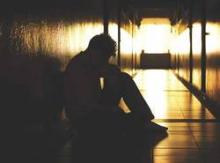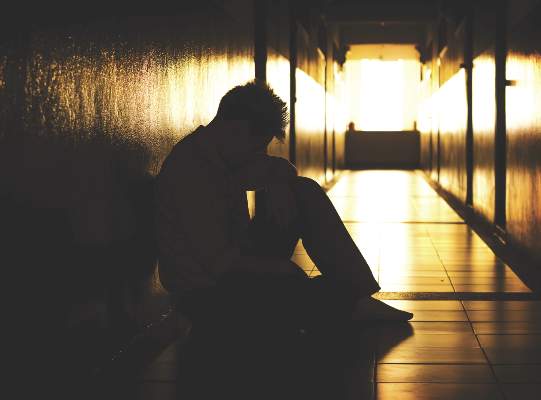User login
The U.S. Preventive Services Task Force has issued a grade B recommendation in support of depression screening in adolescents aged 12-18 years when “adequate systems are in place for diagnosis, treatment, and monitoring,” the group announced Sept. 7.
The draft reaffirms the 2009 USPSTF recommendation but eliminates the suggestion of specific therapies, such as cognitive behavioral therapy (CBT), because of decreased concern over the harms of antidepressant medication in adolescent patients.
“Although the data are limited, the USPSTF concludes that the evidence on the frequency of medication-related adverse events in adolescents is adequate to estimate that the magnitude of harms of pharmacotherapy is small if patients are closely monitored,” the statement said.
The new recommendation also reaffirms the 2009 stance that current evidence is insufficient to make a recommendation for children aged 7-11 years.
Results from two national surveys found that about 8% of adolescents reported having major depressive disorder (MDD) in the past year, with a mean onset age of 14-15 years, the USPSTF noted.
“Children and adolescents with MDD typically have functional impairments in their performance at school or work, as well as in their interactions with their families and peers,” the statement said. “Depression can also negatively affect the developmental trajectories of affected youth.”
Additionally, depression in childhood and adolescence is strongly associated with recurrent depression in adulthood, other comorbid psychiatric disorders, and increased risk for suicide attempts and completion, the statement said.
Four studies included in a USPSTF review reported superior efficacy with selective serotonin reuptake inhibitor treatment, compared with placebo, with the absolute difference in response ranging from 2.4% to 25%. Results were statistically significant in two of the four trials, the task force reported.
In addition, two studies that evaluated CBT found nonstatistically significant improvements in response, compared with placebo (43.2% vs. 34.8%).
A separate trial, which compared combined CBT plus fluoxetine treatment with placebo, found that CBT plus fluoxetine showed a 71% response rate, compared with 35% in the placebo group (P = .001), the USPSTF said.
The task force reported no direct evidence on the harms of screening.
“Only 36% to 44% of children and adolescents with depression receive treatment, suggesting that the majority of depressed youth are undiagnosed and untreated,” the USPSTF said.
Findings show that “screening tests can accurately identify MDD in adolescents” and that “treatment of adolescents identified through screening is associated with beneficial reductions in MDD symptoms,” the task force concluded.
The draft recommendation is open for public comment on the USPSTF website until Oct. 5.
The U.S. Preventive Services Task Force has issued a grade B recommendation in support of depression screening in adolescents aged 12-18 years when “adequate systems are in place for diagnosis, treatment, and monitoring,” the group announced Sept. 7.
The draft reaffirms the 2009 USPSTF recommendation but eliminates the suggestion of specific therapies, such as cognitive behavioral therapy (CBT), because of decreased concern over the harms of antidepressant medication in adolescent patients.
“Although the data are limited, the USPSTF concludes that the evidence on the frequency of medication-related adverse events in adolescents is adequate to estimate that the magnitude of harms of pharmacotherapy is small if patients are closely monitored,” the statement said.
The new recommendation also reaffirms the 2009 stance that current evidence is insufficient to make a recommendation for children aged 7-11 years.
Results from two national surveys found that about 8% of adolescents reported having major depressive disorder (MDD) in the past year, with a mean onset age of 14-15 years, the USPSTF noted.
“Children and adolescents with MDD typically have functional impairments in their performance at school or work, as well as in their interactions with their families and peers,” the statement said. “Depression can also negatively affect the developmental trajectories of affected youth.”
Additionally, depression in childhood and adolescence is strongly associated with recurrent depression in adulthood, other comorbid psychiatric disorders, and increased risk for suicide attempts and completion, the statement said.
Four studies included in a USPSTF review reported superior efficacy with selective serotonin reuptake inhibitor treatment, compared with placebo, with the absolute difference in response ranging from 2.4% to 25%. Results were statistically significant in two of the four trials, the task force reported.
In addition, two studies that evaluated CBT found nonstatistically significant improvements in response, compared with placebo (43.2% vs. 34.8%).
A separate trial, which compared combined CBT plus fluoxetine treatment with placebo, found that CBT plus fluoxetine showed a 71% response rate, compared with 35% in the placebo group (P = .001), the USPSTF said.
The task force reported no direct evidence on the harms of screening.
“Only 36% to 44% of children and adolescents with depression receive treatment, suggesting that the majority of depressed youth are undiagnosed and untreated,” the USPSTF said.
Findings show that “screening tests can accurately identify MDD in adolescents” and that “treatment of adolescents identified through screening is associated with beneficial reductions in MDD symptoms,” the task force concluded.
The draft recommendation is open for public comment on the USPSTF website until Oct. 5.
The U.S. Preventive Services Task Force has issued a grade B recommendation in support of depression screening in adolescents aged 12-18 years when “adequate systems are in place for diagnosis, treatment, and monitoring,” the group announced Sept. 7.
The draft reaffirms the 2009 USPSTF recommendation but eliminates the suggestion of specific therapies, such as cognitive behavioral therapy (CBT), because of decreased concern over the harms of antidepressant medication in adolescent patients.
“Although the data are limited, the USPSTF concludes that the evidence on the frequency of medication-related adverse events in adolescents is adequate to estimate that the magnitude of harms of pharmacotherapy is small if patients are closely monitored,” the statement said.
The new recommendation also reaffirms the 2009 stance that current evidence is insufficient to make a recommendation for children aged 7-11 years.
Results from two national surveys found that about 8% of adolescents reported having major depressive disorder (MDD) in the past year, with a mean onset age of 14-15 years, the USPSTF noted.
“Children and adolescents with MDD typically have functional impairments in their performance at school or work, as well as in their interactions with their families and peers,” the statement said. “Depression can also negatively affect the developmental trajectories of affected youth.”
Additionally, depression in childhood and adolescence is strongly associated with recurrent depression in adulthood, other comorbid psychiatric disorders, and increased risk for suicide attempts and completion, the statement said.
Four studies included in a USPSTF review reported superior efficacy with selective serotonin reuptake inhibitor treatment, compared with placebo, with the absolute difference in response ranging from 2.4% to 25%. Results were statistically significant in two of the four trials, the task force reported.
In addition, two studies that evaluated CBT found nonstatistically significant improvements in response, compared with placebo (43.2% vs. 34.8%).
A separate trial, which compared combined CBT plus fluoxetine treatment with placebo, found that CBT plus fluoxetine showed a 71% response rate, compared with 35% in the placebo group (P = .001), the USPSTF said.
The task force reported no direct evidence on the harms of screening.
“Only 36% to 44% of children and adolescents with depression receive treatment, suggesting that the majority of depressed youth are undiagnosed and untreated,” the USPSTF said.
Findings show that “screening tests can accurately identify MDD in adolescents” and that “treatment of adolescents identified through screening is associated with beneficial reductions in MDD symptoms,” the task force concluded.
The draft recommendation is open for public comment on the USPSTF website until Oct. 5.

